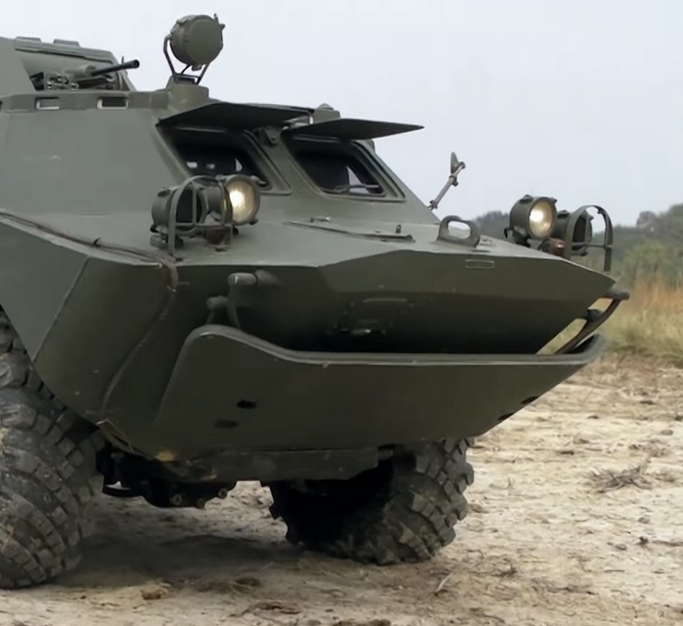
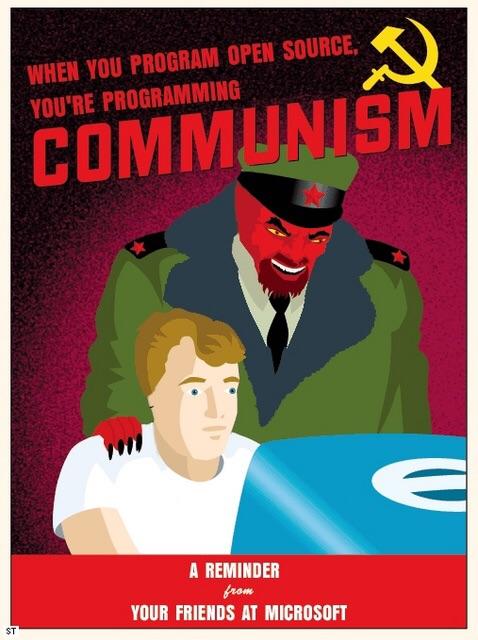
SMIC is the fab that Huawei contracts to make the Kirin 9000S. Huawei has the capability to make most other chips itself just not mobile phone SOCs.


SMIC is the fab that Huawei contracts to make the Kirin 9000S. Huawei has the capability to make most other chips itself just not mobile phone SOCs.


AMD always having the process advantage over Intel and Nvidia but still ending up as the underdog is puzzling.
AMD Zen 2 on 7nm should’ve destroyed Comet lake on 14nm but it didn’t. Rocket Lake faired a lot worse against Zen 3 but it was an iffy 10nm to 14nm port job.
AMD Navi GPUs on 7nm somehow were less efficient than Nvidia’s Turing on 12nm(16nm+) while also not having ray tracing or tensor cores. Nvidia were left cocky enough to go for Samsung’s discount 8nm the gen after instead of attaining process parity.
It’s going to get worse because the gains from each succeeding node diminishes so AMD can no longer count on the gains to make them competitive.


It doesn’t help that Qualcomm’s 888, and 8 Gen 1 were a disappointment. Even more so since they were the debut of ARM’s Cortex-X series of performance cores. Those were supposed to be ARM’s attempt at matching Apple’s custom cores. Thermal throttling issues meant that they weren’t even real upgrades from the 865 in terms of sustained performance.
The original Kirin 9000 was from 2020. Hard to improve performance, if the US government is doing everything to hinder your ability to make chips in the first place. Huawei matching the original TSMC 5nm EUV chip with just SMIC 7nm DUV is a miracle.


Well look at the other contract fabs that could buy EUV scanners if they wanted to.
GlobalFoundries gave up on 7nm so 14/12nm is the best they have. UMC barely makes any 14nm chips so they definitely aren’t pursuing anything below 7nm. Getting to 7nm is an investment few can make and it won’t pay off for most. The number of fabless chip companies that can afford to design for <7nm and need the leading edge in performance is tiny. A high price of entry to serve so few customers.
SMIC is only the third pure play contract fab to offer <=7nm and Samsung needed EUV to get to 7nm unlike SMIC and TSMC.
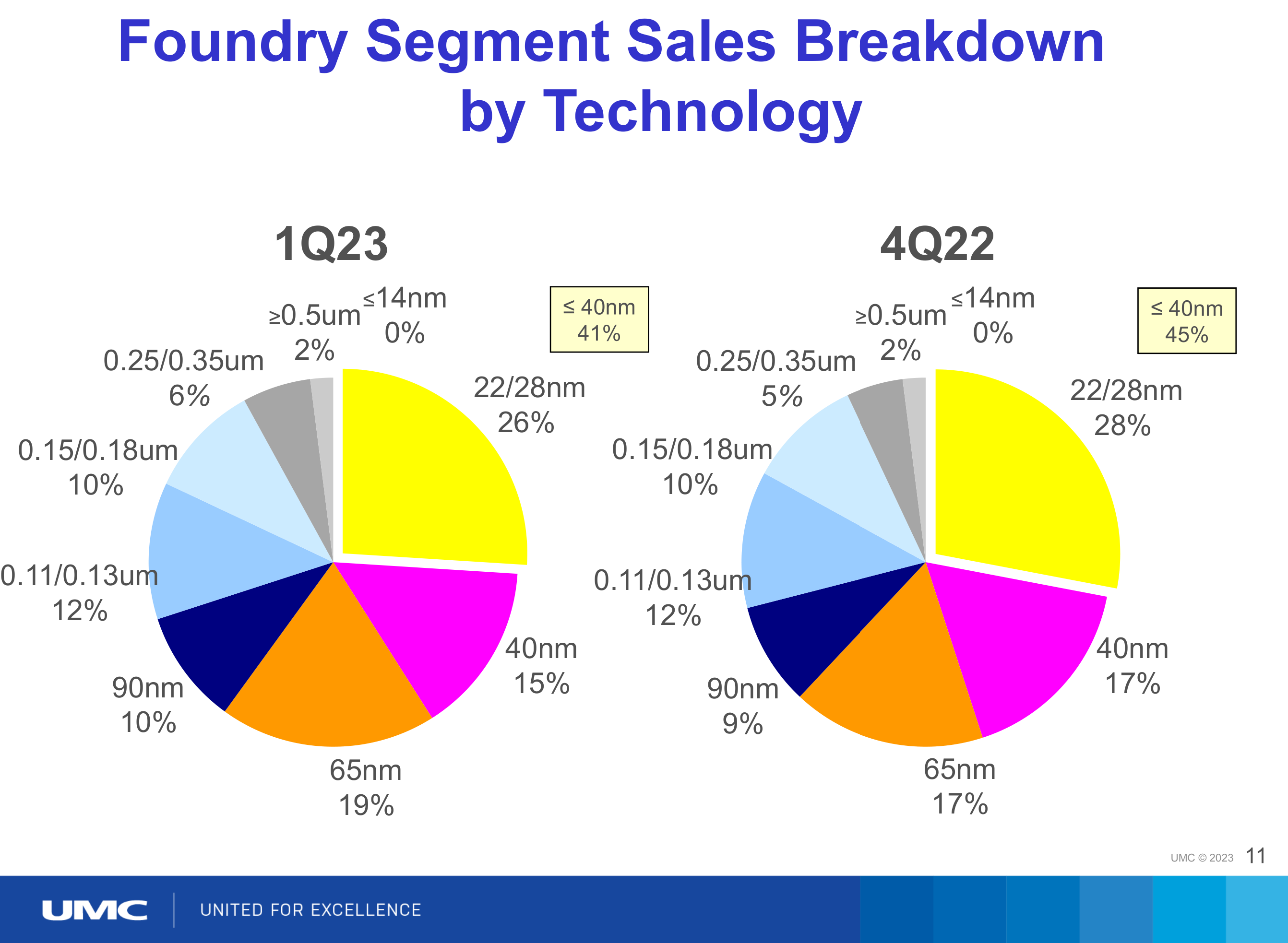
Judging by the performance and density of the Kirin 9000S, SMIC’s 7nm DUV is at least as good as Samsung’s 5nm EUV. The same A510 cores made with SMIC’s 7nm are as efficient if not more so than those made with Samsung 4nm.
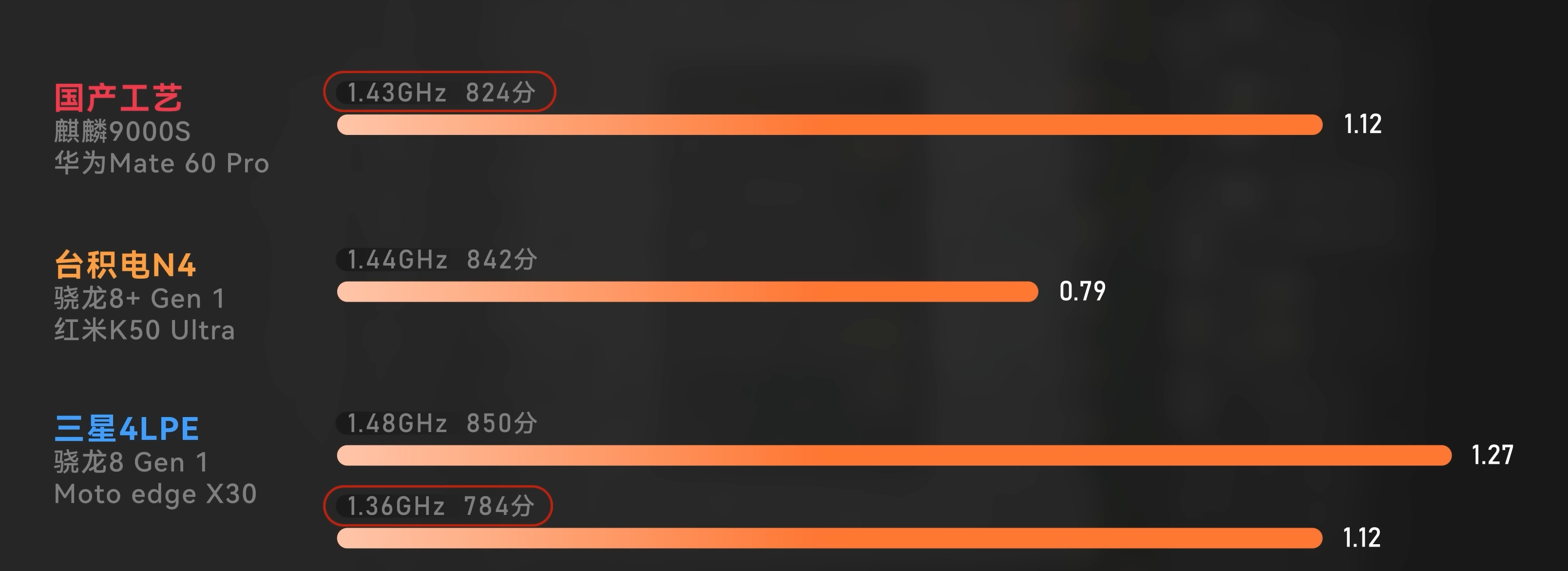
The previous top Huawei phone, the P60 Pro has the 4G variant of the 8+ Gen 1, which was made with TSMC 4nm. The Mate 60 Pro being technically a downgrade in process node is something few if any of its users will actually notice in practice. Huawei could’ve easily just made a 5G modem and paired it with an 8 Gen 2. It would’ve been a lot easier to make a tiny modem yield but they chose the harder option of making an entire SOC. They succeeded in matching if not surpassing the TSMC 5nm made original that stopped being made on September 15, 2020. All the sanctions could do was delay further production of the Kirin 9000 for 3 years.


I don’t think the CPU performance is down to optimization. The 4 custom Taishan performance cores having hyper threading is probably why. The Kirin 9000S has 8 cores / 12 threads, which is why the multi-core score is so high.
The GPU drivers definitely aren’t ready yet; it can’t render Genshin Impact correctly. It’s not an ARM Mali reference design; it’s Huawei own Maleoon 910. The only things from ARM are the Cortex-A510 efficiency cores, and the instruction set.


The Kirin 9000S is only 2% larger than the original 9000, which was made using TSMC 5nm. It performs far better than any 7nm chip.
CPU Performance almost matches the 4nm Exynos 2200, which because the 2300 was a no show is the best chip Samsung has.

GPU Performance although not a match for the original 9000 still exceeds the 5nm Snapdragon 888.

Geek Bench 5 Multi/Single core Scores
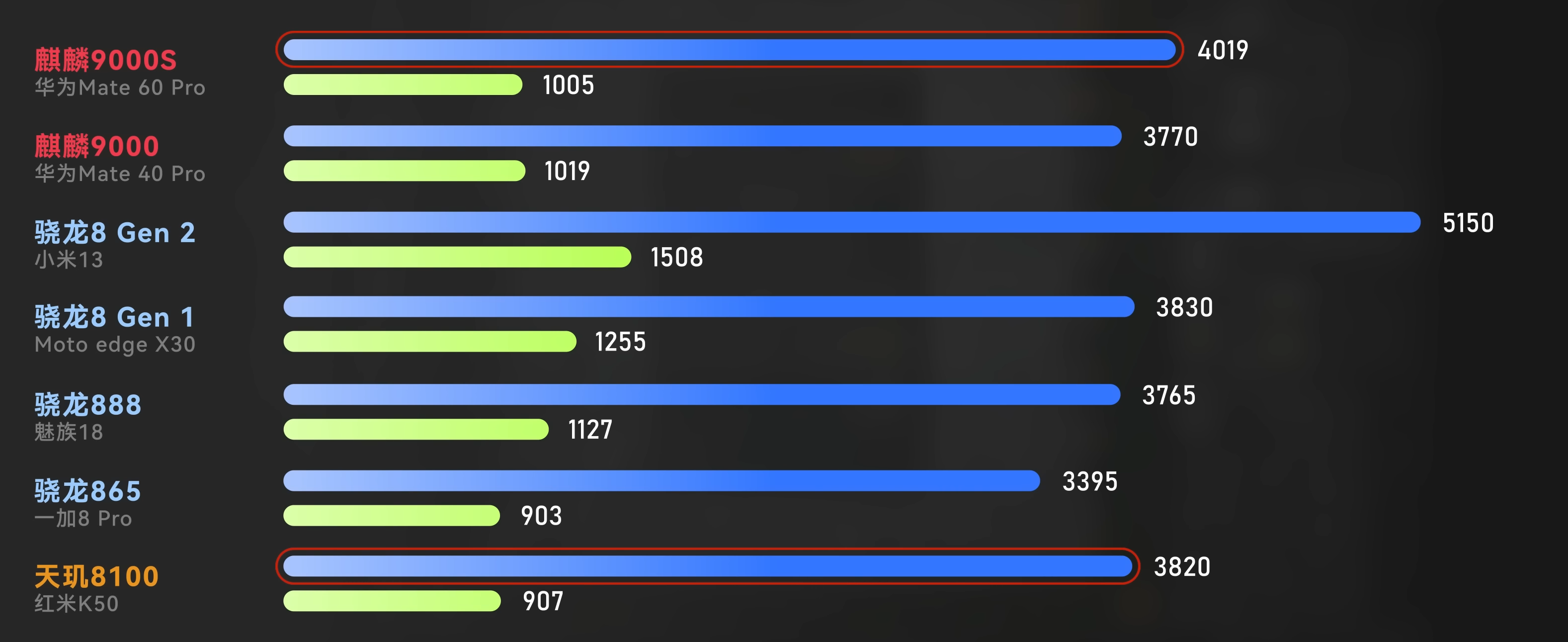
Starfield demonstrates a complete lack of any cohesive vision in story, themes, and gameplay.
The artstyle has that generic “hard” space sci-fi look. I could just as well be looking at Star Citizen, Interstellar, or The Expanse. The locations might sound interesting in theory but are executed in the most bland way possible. It’s kind of hilarious to think that these tiny settlements are supposed to be interplanetary capital cities. I do understand that unrestricted player movement means that they can’t really place a massive city in the background like in the Mass Effect Trilogy but explicitly calling the places you visit capitals is absurd.
Bethesda tries hard to ape Serenity-esque space westerns with Akila. An interplanetary capital without paved roads in its main thoroughfare. It really clashes with the rest of the game’s attempts at being seen as a believable “hard” sci-fi. A vision of a car free future brought to you by the limitations of the Creation Engine. The game engine is no excuse for not having a space horse though. Traversing procedurally generated terrain on foot is a waste of time.
The vaguely utopian corporate solarpunk of New Atlantis is soulless and not in the satirical good way. Which is ironic because it seems to be inspired by Starship Troopers.
Neon, the cyberpunk offworld oilrig tries and fails to be a hip seedy dystopia. It looks more like the Outer World’s Groundbreaker Promenade than Mass Effect 2’s Omega. It doesn’t illicit feelings of despair from the callous disregard of humanity as a consequence of greed without limits. It’s just a shopping mall with boring corporate suits who try to sound edgy.
The same goes for the music. It doesn’t convey any emotion and isn’t uniquely identifiable. Inon Zur’s work for the Bethesda Fallouts weren’t this forgettable so it’s probably down to Bethesda’s lack of direction. The music doesn’t build into the atmosphere of any location or any story moment. I don’t think Jeremy Soule would’ve made a difference, and it’s good that Bethesda doesn’t associate with an accused rapist. That said I’d still say his work with Oblivion was one the best soundtracks of any game.
Ship combat has controls like Freelancer except it plays terrible. The ships feel heavy and are unresponsive to control so it doesn’t really work as an arcade space combat game. The mouse first controls with no flight stick support, fast travel, and the inability to actually dock/land manually make it an automatic fail as a spaceflight sim. The ability to fast travel instantly to any previously visited location is good though. With its quest design, it would be painful to play Starfield if they went the sim route.
The gun play is identical to Fallout 4 but plays worse due to procedurally placed enemies and levels. It has to rely on the AI, weapons and enemy design. None of those elements are able to make the fights interesting. It’s still a lot better than any of the other spaceflight games with ground combat though.
The bar is being dropped so hard that Mass Effect Andromeda is retroactively becoming a great game. In the universe that Starfield is an 87, Andromeda is at least a 97.
I’ll still play Starfield over Elite Dangerous, or No Man Sky since it has actual content. It isn’t all procedurally generated and has an actual story with characters. I’ll finish the main quest at least, the game isn’t aggressively bad in anyway. It’s just all around sterile and uninspiring. I still have the hope that somewhere out there I might find a branching side quest that is remotely as good as those in Oblivion, or New Vegas.


28nm is the nominal resolution of the scanner. The chips that can be made with a single exposure. In that measure no ASML DUV scanner is 7nm either. The physics of 193nm light makes it impossible for any DUV scanner to have a nominal resolution of 7nm. 7nm chips are made using DUV by exposing 4 times at a 28nm resolution. The same quad patterning techniques allows 22nm chips to be made with a 90nm machine.
The name is also misleading 7nm chips aren’t sub 9nm. TSMC’s 7nm chips are physically 10nm. The marketing names haven’t matched for years. It all started when TSMC sold 20nm FinFET under 16nm branding as they believed the addition of FinFET gave it 16nm performance. Then the entire industry adjusted their naming conventions to match with TSMC.
SMIC, Huawei didn’t get to where they are by compromising. They never would’ve bought the Chinese domestic alternatives if not for sanctions. Price doesn’t matter in this industry, what they’re looking for is the best in the market. This is not the type of capital equipment that subsidies can sell. Which is why when US scanner manufacturers couldn’t compete with ASML, they completely failed as economically viable businesses and their assets were sold off.


China prepared for this 17 years ago. They launched the “02 Special Project” all the way back in 2006. The companies established by those grants have existed years before the sanctions. They were able to develop the products but selling them was another thing entirely, until the sanctions hit causing a massive boom in their revenue. People forget that it was market conditions that killed GlobalFoundries 7nm effort not technical issues. The same reason UMC gave up on anything more advanced than 14nm. Sanctions created the inevitability of Chinese 7nm by wedding the world’s largest telecom equipment vendor, Huawei to SMIC.

It’s an amusing coincidence that by the time ASML will no longer be granted export licenses for their 5nm capable DUV scanners, the NXT:2000i and above, SMEE will be selling a 7nm capable scanner, the SSA/800-10W. A machine easily comparable to the NXT:1980Di that TSMC used to develop their N7 process. The fact that the NXT:1980Di and anything less advanced than it isn’t going to be export restricted is an implicit acknowledgement of the Chinese capability of making competing machines.
5nm capable DUV scanners, such as the SSA/900 still in development, might be a requirement for SMIC N+2 however as the “7nm” Kirin 9000S is only 2% larger than the TSMC N5 made Kirin 9000. That suggest a density far exceeding anything any other foundry has been capable of with just DUV, such as Intel 7 or TSMC N7/N7P.
Applied Materials and LAM are less of an issue. AMEC has been selling 5nm etching systems to Samsung and TSMC for years.
TSMC made Kirin 9000 ran out in 2021, P50 Pro was the last phone to use it and the Kirin 820 ran out in 2022. It’s only the 5G base stations that still use TSMC made HiSilicon chips.


The only Nintendo console I ever had was a Famiclone so I don’t really have much nostalgia for their games.
It’s just Nintendo ROMs that are disappearing. It’s still easier than ever to find even the most obscure classic PC games on abandonware sites and GOG compilation torrents. It’s also only the SEO abusing ROM sites that are vulnerable to Nintendo’s attacks. Complete ROMsets for their consoles can still be obtained through torrents, Vimm.net, and the r/ROMs megathread especially for the older cartridge consoles.
Emulating a current gen Nintendo console has never been as good as it is for Switch emulators. Any new PC can emulate Switch Triple As at full speed. Android is getting builds of the Yuzu emulator and mobile SOCs have enough power to run less demanding titles. When a lot people who don’t even own a Switch can play Tears of the Kingdom, Nintendo is understandably trying to crack down. The portable aspect of the Switch is no longer a unique advantage. It used to be just GPD making those handheld PCs now every brand is trying to compete in that form factor.
Honestly I think the state of emulation in general is experiencing a golden age.
Retroid, Anbernic and AYN are making hardware that is a better solution for most people than trying to jailbreak and refurbish old original portable consoles. The screens, the analogs and the buttons they use are as good if not better than the first party hardware. Unlike bulky handheld PC, their Linux or Android based emulation handhelds are still in the same size and weight class as the PSP.
A couple years ago the Xbox 360 and PS3 emulators were basically just experimental demos. They weren’t stable enough to actually finish any game on and most CPUs weren’t fast enough to run them at full speed. They’re still hit and miss but the list of playable titles will only ever grow.
It has come to the point that the PC can play everything. All previous gen consoles aside from the OG Xbox have emulators at a playable state. There are almost no current gen console exclusives anymore as the PC is getting ports of PS4/PS5 exclusives, the XBone/Series never had any to begin with, and of coarse the aforementioned Switch emulation.


Being given access to accurate intel is no guarantee that they actually leverage it to form their own views.
There are anecdotes of US officials using mainstream media to spoonfeed them their positions on issues as they can’t be assed to do anything resembling actual work.


US mainstream media isn’t even trustworthy for predicting the US economy.
They downplayed if not outright denied the potential causes of the Great Recession until well after it had already occurred. They then portrayed the Great Recession “from the perspective of the Obama Administration and big business” manipulating the empathy of their audience in order to serve the interests of their true masters.


Asian Knockoff Mexicans
Mail order brides for those who can’t afford Eastern Europeans or East Asians
To the IQ obsessed HBD types, having the lowest PISA scores in Southeast Asia means we’re more Honorary Black than Honorary Aryan on the racial totem pole.
It’s conventional warfare, not guerilla warfare, nor a suicide bombing campaign. The worst case scenario would resemble the Iran-Iraq war and the initial conditions resembled Northern Cyprus more than Afghanistan.
The Ukrainians don’t really even have an equivalent to the Viet Cong. Insurgencies need the support of the local populace to eat and operate without being ratted out. Only Kherson is even close to divided enough for that to have a remote chance of occurring.
The terrain and culture of Ukraine aren’t like Afghanistan. Afghans are more loyal to their tribes than Kabul. The underdeveloped subsistence farming economy of Afghanistan means any insurgent knows how to live off the land and survive living in deprivation for long and sustained periods. The terrain of Afghanistan allows insurgents to easily isolate whatever forces the government sends in an attempt to control the countryside. The Taliban won without any state really backing them. The overall population of Ukraine and Afghanistan might be similar but what matters most is the demographic in the age range for military service.
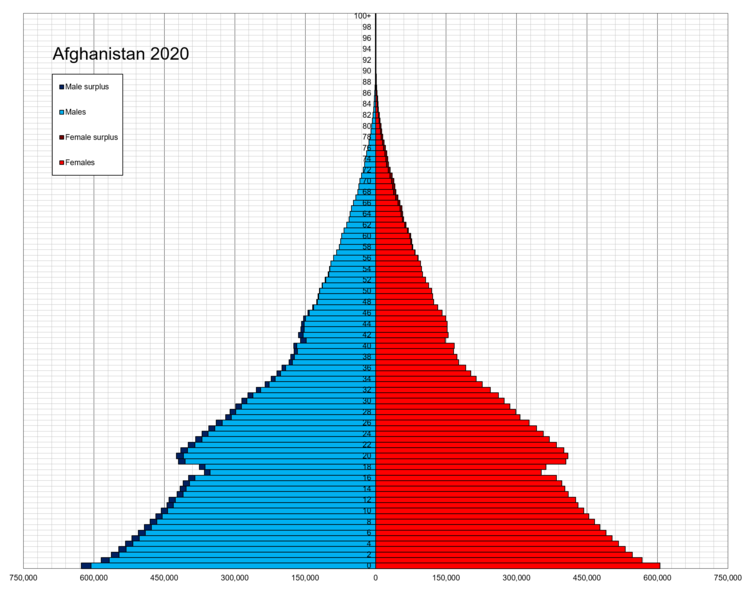
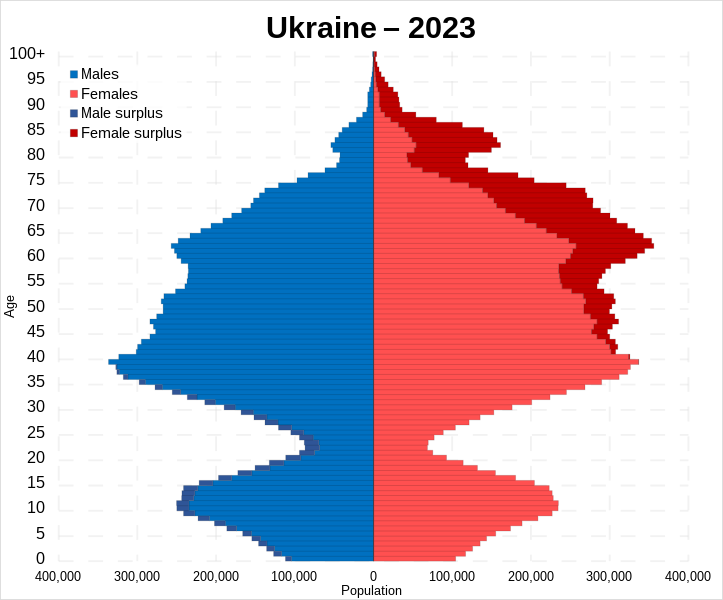
Syria didn’t turn into an Afghanistan. The Donbass republics fended for themselves for 8 years while the DRA only lasted 3 years alone. Even then the DRA still outlasted the Soviet Union so had material support continued they might’ve continued on as a rump state. It wasn’t like the US puppet, Ghani’s regime, which just collapsed immediately after the US pullout.
Ukrainians are more Northern Alliance than Taliban. Their ideology isn’t anywhere near as unified as the Taliban’s. The moderate liberals and extremist fascists would turn on each other if living conditions deteriorated sharply.
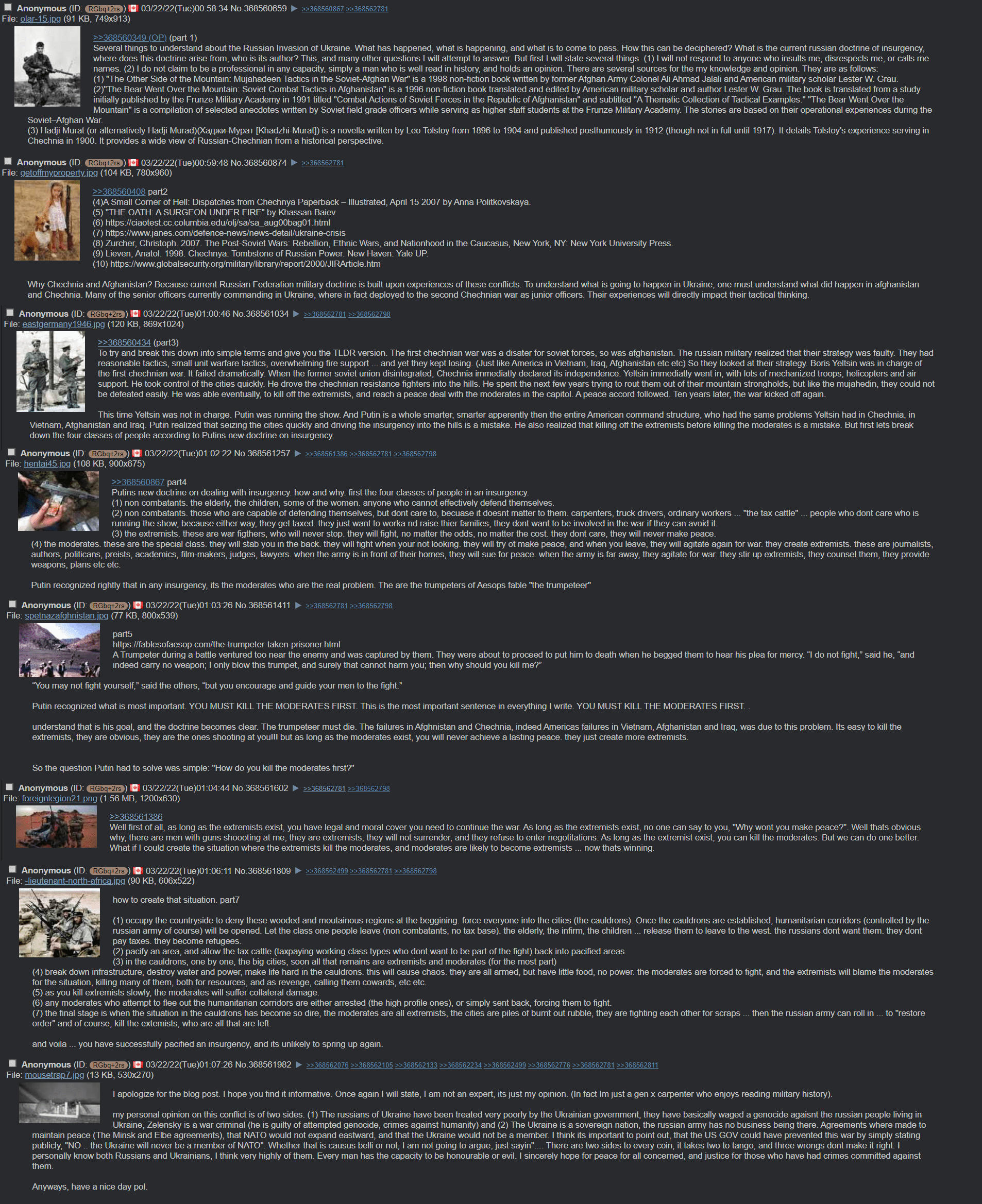
There can be no defeat either. Pulling out would be political suicide for anyone in the Kremlin. Abandoning Russians in Russian territory would be different from abandoning the DRA. Nukes would fall before Crimea falls.
Anyway, you can’t really predict the future by looking at the past. The similarities are only down to hindsight and brute force exhaustion of every possible historical parallel.
If the Russians were even half as petty and image obsessed as the Ukrainians are, they’d fire a missile into that trident.


Overextend, turn your enemy into insurgents, attempt to kill every one over ten of the “military aged males”, cause a global financial crisis, as a million people die due to your shit pandemic handling pull-out
The US is worse than Ukraine. They send their vassals to death without a second thought but with an inevitable betrayal. Yet if they ever fought a war in their own land for once, they’d quickly lose the will and ability to fight.


That’s based on TSMC’s own test chip not an actual customer’s. 17.92 mm² is incredibly tiny when SoCs, CPUs and GPUs range in size from 100 to 600 mm² increasing the proportion of chips with defects as the number of chips on the wafer drops.
From that very article
In that case, let us take the 100 mm2 die as an example of the first mobile processors coming out of TSMC’s process. Again, taking the die as square, a defect rate of 1.271 per cm2 would afford a yield of 32.0%.
As TSMC themselves designed the chip, they definitely followed all their design rules for that process to maximize yield. No customer would do that.
Anand explains this in one of his articles.
But have no fear. What normally happens is your foundry company will come to you with a list of design rules and hints. If you follow all of the guidelines, the foundry will guarantee that they can produce your chip and that it will work. In other words, do what we tell you to do, and your chip will yield.
The problem is that if you follow every last one of these design rules and hints your chip won’t be any faster than it was on the older manufacturing process. Your yield will be about the same but your cost will be higher since you’ll bloat your design taking into account these “hints”.
Generally between process nodes the size of the wafer doesn’t change. We were at 200mm wafers for a while and now modern fabs use 300mm wafers. The transistor size does shrink however, so in theory you could fit more die on a wafer with each process shrink.
The problem is with any new process, the cost per wafer goes up. It’s a new process, most likely more complex, and thus the wafer cost is higher. If the wafer costs are 50% higher, then you need to fit at least 50% more die on each wafer in order to break even with your costs on the old process. In reality you actually need to fit more than 50% die per wafer on the new process because yields usually suck at the start. But if you follow the foundry’s guidelines to guarantee yield, you won’t even be close to breaking even.
The end result is you get zero benefit from moving to the new process. That’s not an option for anyone looking to actually use Moore’s Law to their advantage. Definitely not for a GPU company.
The solution is to have some very smart people in your company that can take these design rules and hints the foundry provides, and figure out which ones can be ignored, and ways to work around the others. This is an area where ATI and NVIDIA differ greatly.
Neoliberals will do anything to downplay or outright deny any historical incident where import substitution lead to industrialization. Creating captive markets for the dumping of manufactured products was one of the prime drivers of colonialism, which continued under neocolonialism. With sanctions, the US is unintentionally undermining their own hegemony. Businesses like having access to markets and moats. They are giving moats to one side and stripping access to the other.
Sanctions will do for Chinese chip makers what the great firewall did for Chinese internet giants.
Seeing /u/dylan522p acknowledge reality somewhat is refreshing although the conclusion is the predictable “Washington is just sanctioning wrong, if they followed my foolproof sanction regime it would magically work”. Liberals attacking him for this article is quite hilarious. They’re really intolerant of even the slightest deviation from US state department rhetoric.